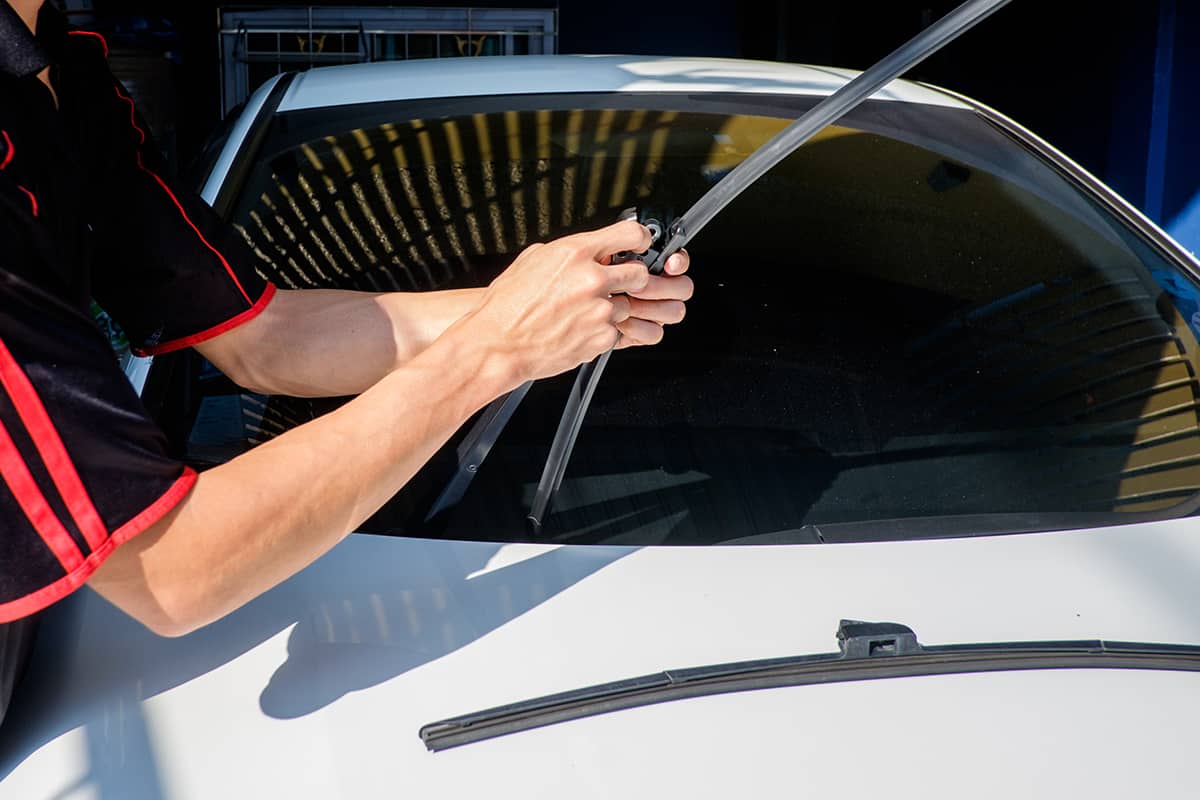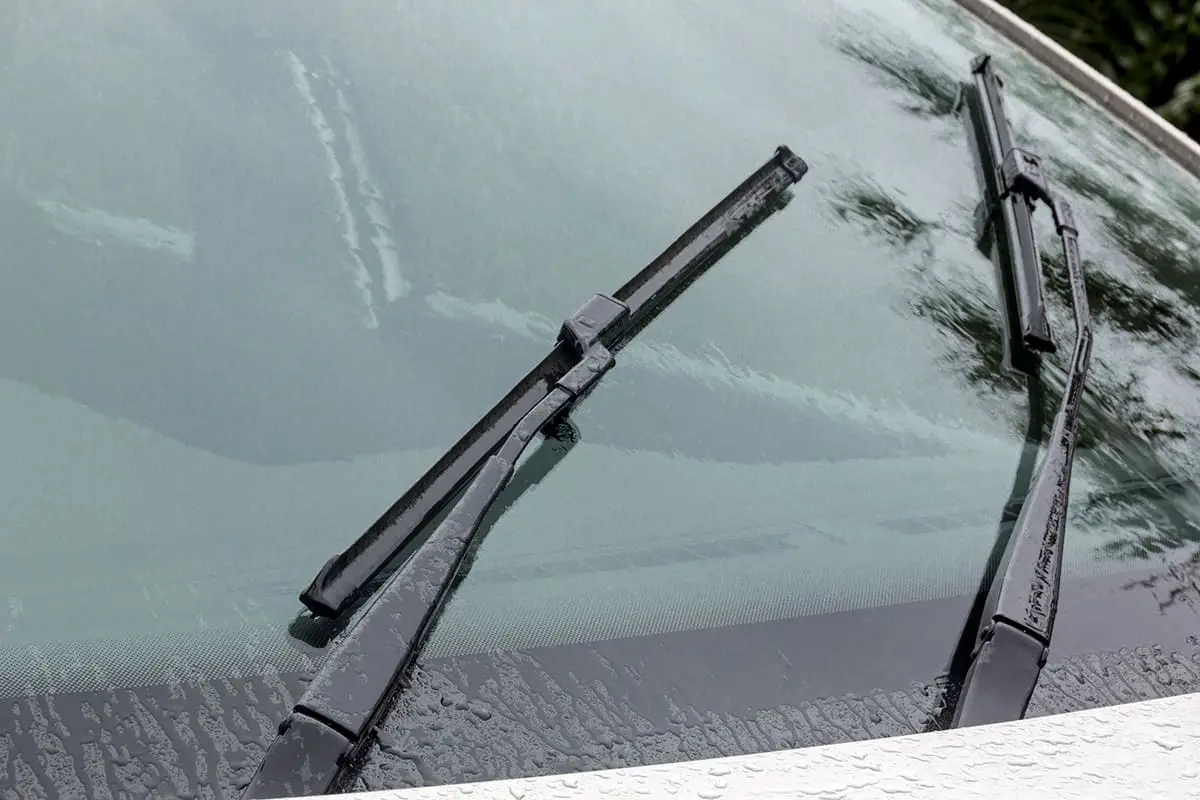Windshield wipers keep rain droplets out of view by pushing them down and to the side of your windshield. However, over time, you may notice the wiper blades becoming less and less effective, possibly leaving unsightly streaks or entire unwiped portions on the glass. The best thing you can do in this case is to replace the windshield wipers, but what size should you get?
In general, windshield wipers measure 9 to 32 inches in length. To know how long your wiper blades are, measure the length of the rubber portion of your blades with a tape measure.
In this guide, I’ll explain how long windshield wipers are in more detail when you should replace the wipers, and what to look for in a pair of windshield wipers.
Windshield Wiper Sizes
Whether you realize it or not, windshield wipers are a safety feature. They’re designed to remove rain and light, powdery snow from your windshield, giving you maximum visibility when driving. As such, you should give them as much attention and care as you would any other safety mechanism in your car.
So, if you’ve determined that your windshield wipers are in need of replacing, you first need to figure out what windshield wipers size to get.
As previously mentioned, windshield wipers generally range from 9 to 32 inches in length. This indicates that there’s no such thing as a one-size-fits-all wiper blade. So, it’s important that you first figure out how long your windshield wipers are in order to purchase the perfect replacements.
How to Measure Windshield Wipers

There are 2 things you can do to figure out how long your windshield wipers are. The first involves using a tape measure.
- Flip the windshield wipers up so they’re pointed in the same direction as the hood of your car.
- Use a tape measure to measure the length of the rubber portion of the windshield wiper.
- Round that figure to the nearest inch.
This 3-step process is simple to do, and you’ll get a good estimate of how long the replacement wipers should be.
However, if you want an even more accurate way of learning the size of your windshield wipers, simply open the driver’s manual, flip to the windshield section, and search for the length of your make and model wipers.
After learning the length of your windshield wipers, you just need to head down to a retailer and purchase replacements. Sometimes, the wiper blades will be measured in millimeters. So, make sure you know how to convert inches to millimeters and vice versa.
When Should You Replace Windshield Wipers?

Windshield wiper blades usually last for between 6 and 12 months. The exact figure depends on how frequently you use to turn them on, whether or not your windshield is lubricated when the wipers are on, and how often you park your car in the sunlight.
The main part of the windshield wiper is the rubber blade that slides across your windshield to remove liquid and solids. Over time, the blades will degrade to the point that they wipe less and less of your windshield with every swipe.
You can either follow the 6-to-12-month timeframe to figure out when to replace your windshield wipers, or you can use visual cues to tell you when the wiper blades are past their prime. If the rubber blade is cracked, or if it doesn’t slide as smoothly across your windshield, it’s time you picked up a pair of replacement wipers.
Windshield Wipers Buying Guide
If you’ve decided it’s time to replace your old, cracked windshield wipers with a pair of brand-new ones, this guide will help you find the perfect fit for your car.
Size
Throughout this guide, I’ve spoken about how to find the right windshield wiper size for your car. However, did you know that you can pick up a pair of wipers that are smaller than your original ones?
For instance, if your car’s wipers are 25 inches long, it’s possible to install 15, 20, or 24-inch wipers in their place. That said, shorter blades will clean a smaller portion of your windshield with each swipe, so I suggest sticking to the original size.
Wiper types
There are 2 main types of wipers to choose from—conventional and beam.
Conventional wipers have a spring-loaded frame or bridge that accepts replacement rubber blades. The blades usually have a thin metal rod that gives the rubber portion structure, allowing it to maintain consistent contact on your windshield until the rubber degrades.
Beam wipers are costlier but more effective. They do not rely on an external frame to keep the blades in place. Instead, they have a steel system that attaches to your car, supposedly providing more consistent pressure on your windshield. In addition, they last longer since the blade will continue to push down on your windshield as the rubber degrades.
Blade Types
In addition to the wiper options, you’ll also have to choose the appropriate blade type for the season.
Regular blades are those used during the spring and early fall seasons. They’re mainly used to remove rain droplets and powdery snow from your windshield.
Winter blades are made for cutting through large packs of snow and ice without scratching your windshield. However, they’re a lot more aggressive and tend to wear down more quickly.
If you live in a part of the country where snowfall is measured in feet and not inches, I suggest getting winter wiper blades. You can also swap them out with regular wiper blades when you need to, assuming you stick to the conventional wiper type.
Is the ECOCUT Wiper Blade Trimmer Worth It?
A few years ago, the ECOCUT Wiper Blade Timmer made a huge splash among car owners. It was an ingenious product that supposedly helped people save money on replacing windshield wipers.
This tool comes with a blade that shaves off a tiny portion of the rubber blade, exposing fresh rubber to wipe your windshield clean without streaks. However, judging from its 3.5-star rating, it’s fair to say that it didn’t live up to the hype.
It does a decent job of removing tiny bits of rubber, but it relies completely on the user’s steady hands to get the job done. Even then, the results may not be as clean as you wanted.







